A Back Pressure Regulator monitors and controls upstream pressure. It is an integrated valve because the pilot and the valve are one piece. This animation shows the moving parts inside the valve and the flow through the body.
Please note that the amount of movement shown is exaggerated to demonstrate the working concept.
Upstream pressure flows into the valve inlet and travels through the valve body, exiting through the downstream side. With the adjusting screw unthreaded, there is no tension on the pilot assembly to move the valve to a closed position.
Upstream pressure also travels through the tubing, flowing into the pilot and underneath the sensing diaphragm.
The pilot plug upper seat is closed, blocking upstream pressure. The pilot plug lower seat, which is the pressure vent, is open, allowing the valve seat to be in the open position.
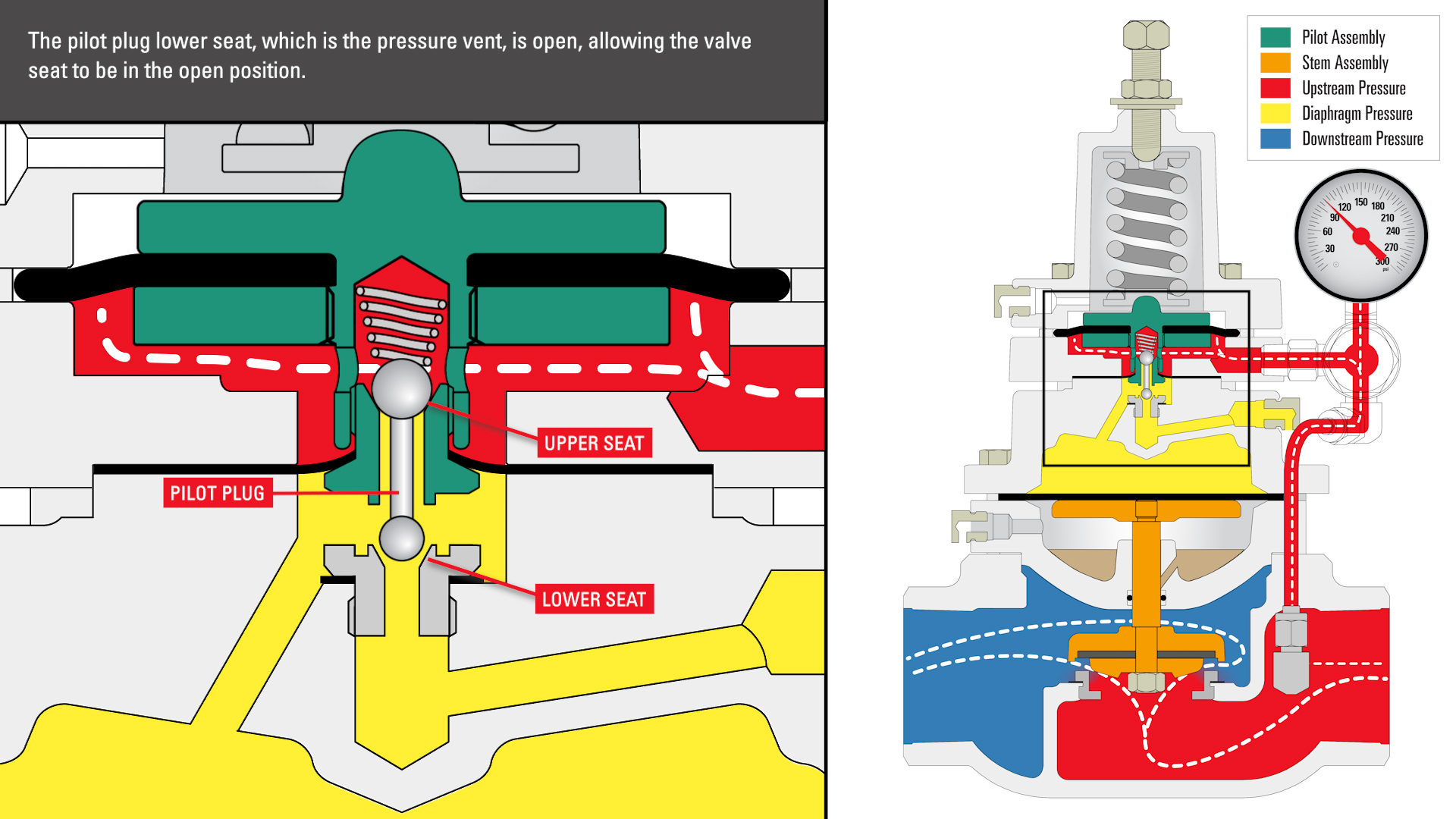
When the adjusting screw is tightened and the pilot spring tension is greater than the upstream pressure, it forces the pilot assembly to move down.
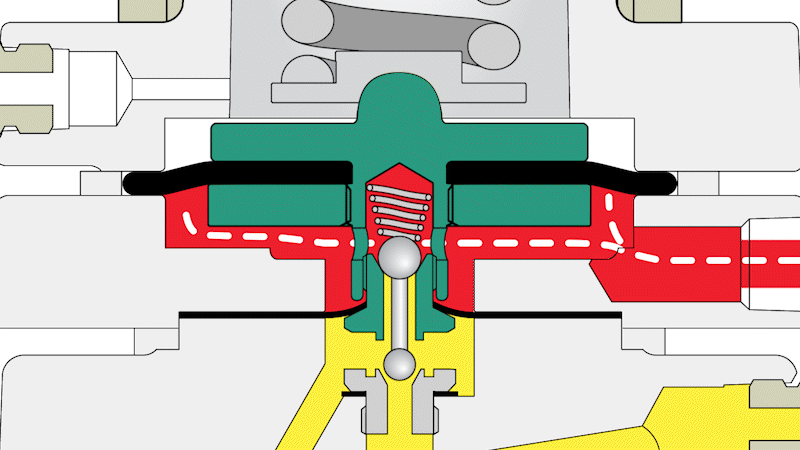
This positions the pilot plug to open the upper seat and allows full upstream pressure to now push down on the motor valve diaphragm. The pilot plug movement adjusts the amount of pressure on the diaphragm, repositioning the stem and seat assembly.
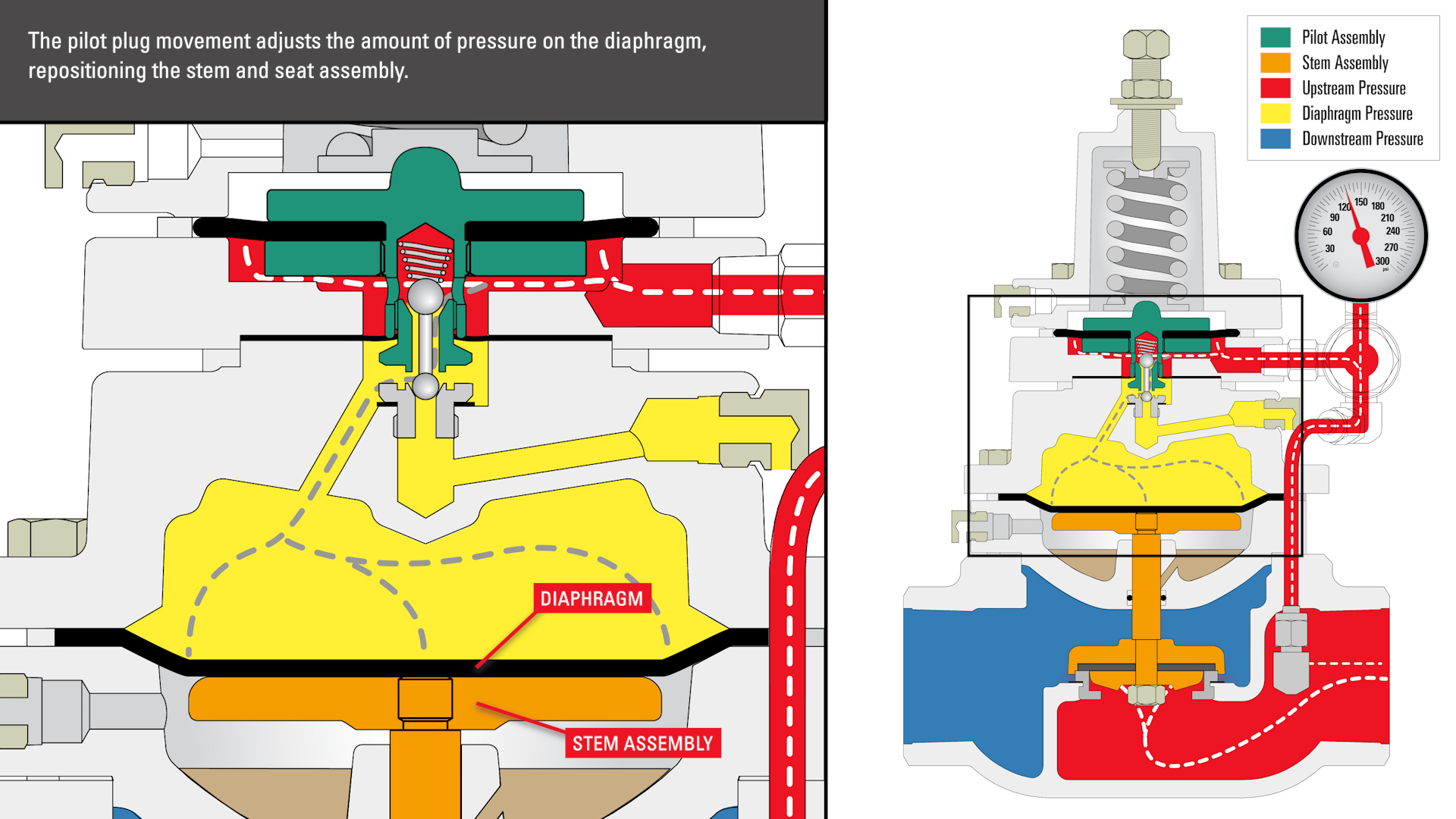
The flow through this regulator is from underneath the seat. The upstream flow pushes up on the seat as the gas is pushing down on the motor valve diaphragm. Because the motor valve diaphragm area is twice that of the seat, the regulator can be held in a closed position with equal pressure on both surfaces.
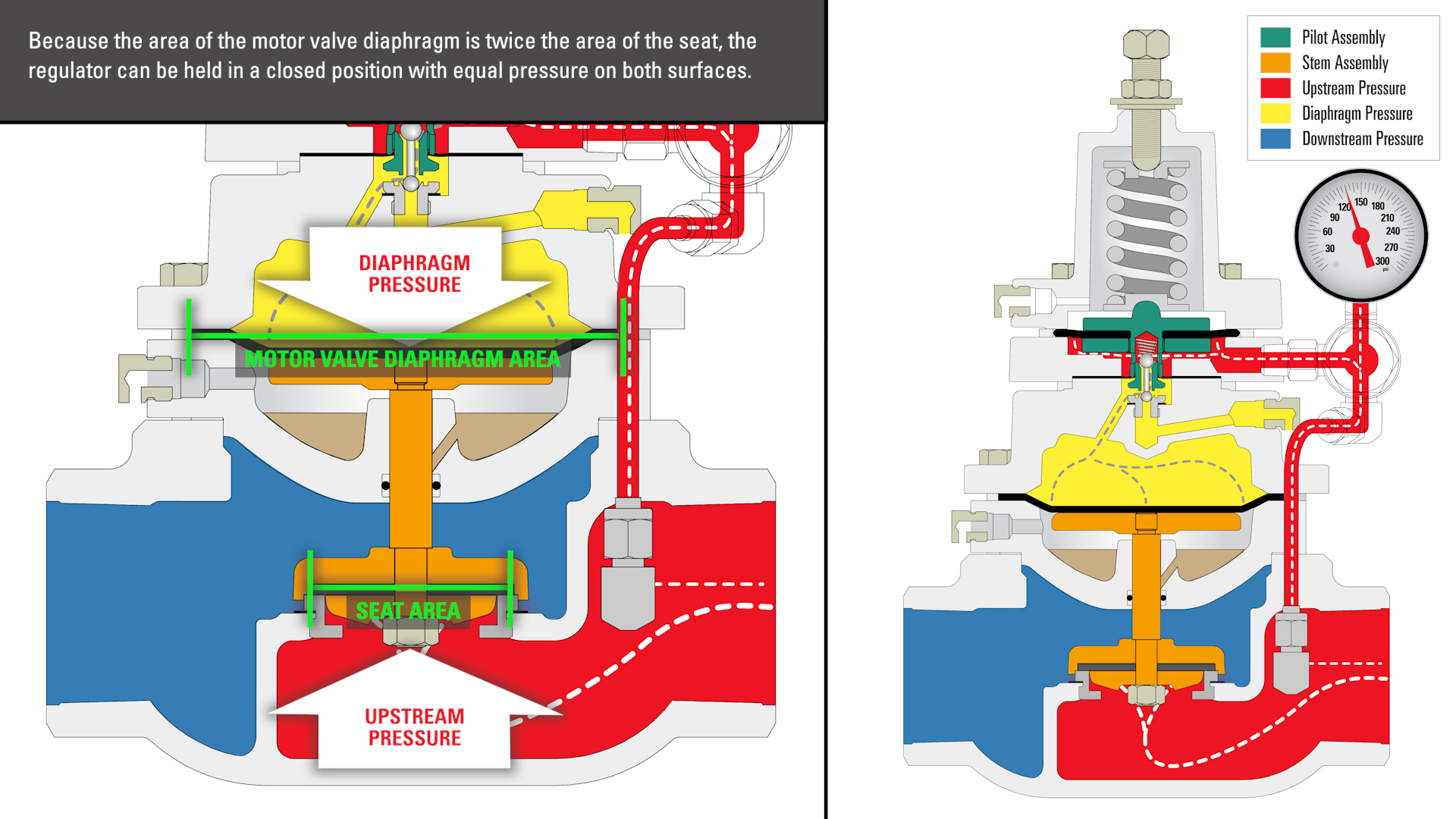
If upstream pressure exceeds the pilot spring tension, which is your set point, it pushes against the pilot spring assembly, closing off the supply side of the pilot plug and unseating the lower seat, which is the pressure vent.
Gas holding the valve closed then vents from the top of the motor valve diaphragm to atmosphere, allowing the valve to open and the upstream pressure regulated.
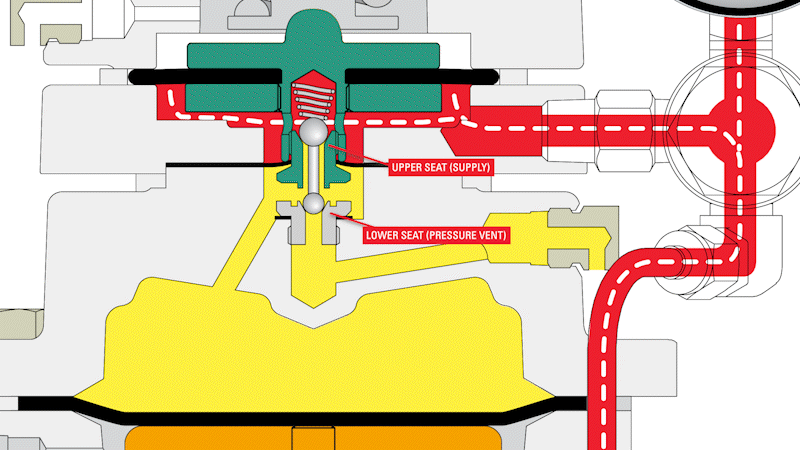
The regulator will begin controlling upstream pressure as it increases or decreases, maintaining a constant back pressure set point.
With the upstream pressure neither above or below the set point, the pilot assembly assumes a position in which both seats of the pilot plug are closed.








































